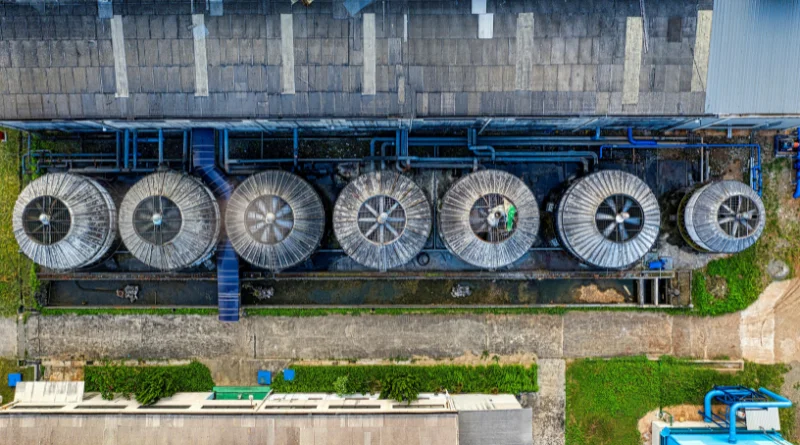The wastewater treatment industry plays a pivotal role in maintaining environmental sustainability by treating and purifying water before its discharge back into natural water bodies. Amidst the various components that constitute a wastewater treatment plant, chemical feed pumps stand out as essential tools. These pumps are the unsung heroes, facilitating precise chemical dosing to optimize the treatment process. In this blog, we will delve into the importance of chemical feed pumps in the wastewater treatment industry, exploring their functionalities, benefits, and the impact they have on overall treatment efficiency.
Understanding Wastewater Treatment: A Brief Overview
Before delving into the specifics of chemical feed pumps, it is imperative to understand the wastewater treatment process. Wastewater treatment involves a series of physical, chemical, and biological processes aimed at removing contaminants and pollutants from wastewater. This treated water is then deemed safe for release into natural water bodies or for reuse in various applications.
The Role of Chemicals in Wastewater Treatment
Chemicals play a crucial role in wastewater treatment by aiding in the removal of contaminants. These chemicals may include coagulants, flocculants, disinfectants, and pH adjusters. The challenge lies in delivering these chemicals in precise quantities to ensure optimal treatment efficiency. This is where chemical feed pumps come into play.
Chemical Feed Pumps: Precision in Dosing
Chemical feed pumps are designed to deliver a precise and controlled amount of chemicals into the wastewater stream. This precision is vital for achieving the desired treatment outcomes. Inaccurate dosing can lead to under-treatment, resulting in ineffective contaminant removal, or over-treatment, which can lead to excessive chemical usage and potential environmental harm.
A. Types of Chemical Feed Pumps
- Diaphragm Pumps: Diaphragm pumps are widely used in wastewater treatment for their ability to provide accurate dosing and handle a variety of chemicals. They operate by displacing a diaphragm, which in turn pushes the chemical into the treatment system.
- Peristaltic Pumps: Peristaltic pumps use rotating rollers to compress a flexible tube, pushing the chemical through the tube and into the wastewater stream. These pumps are known for their reliability and ease of maintenance.
- Metering Pumps: Metering pumps are highly precise and are capable of delivering a constant flow of chemicals. They are particularly suitable for applications where accurate dosing is critical, such as in the addition of coagulants or pH adjustment.
Benefits of Chemical Feed Pumps in Wastewater Treatment
Enhanced Treatment Efficiency
Chemical feed pumps contribute to enhanced treatment efficiency by ensuring that the right amount of chemicals is added at the right time. This precision promotes the effective removal of contaminants, leading to higher water quality standards.
Cost Savings
Accurate chemical dosing results in cost savings for wastewater treatment plants. By avoiding overuse of chemicals, operators can minimize expenses associated with chemical procurement and reduce the need for costly corrective measures in case of over-treatment.
Environmental Protection
Proper chemical dosing, facilitated by chemical feed pumps, not only protects the treatment plant’s equipment but also prevents the release of excess chemicals into the environment. This is crucial for maintaining ecological balance in the receiving water bodies.
Regulatory Compliance
Wastewater treatment plants must adhere to stringent environmental regulations. Chemical feed pumps play a vital role in helping plants meet these regulations by ensuring that the treatment process meets specified standards and guidelines.
Challenges and Considerations in Chemical Dosing
While chemical feed pumps offer numerous benefits, there are challenges and considerations that operators must address to maximize their effectiveness.
A. Chemical Compatibility
Different chemicals have varying properties and compatibility requirements. It is crucial to select chemical feed pumps that are compatible with the specific chemicals used in the treatment process to avoid corrosion or damage to pump components.
B. Maintenance and Calibration
Regular maintenance and calibration of chemical feed pumps are essential to ensure their continued accuracy. Failure to do so can lead to inaccuracies in chemical dosing, impacting treatment efficiency.
C. Operator Training
Operators must be adequately trained to use and maintain chemical feed pumps. Training programs should focus on proper pump operation, troubleshooting, and safety protocols to prevent accidents and ensure the pumps’ optimal performance.
Future Trends and Innovations in Chemical Feed Pump Technology
As technology continues to advance, so does the landscape of wastewater treatment equipment. The future of chemical feed pumps may involve innovations such as smart dosing systems, real-time monitoring, and automated control systems. These advancements aim to further improve accuracy, efficiency, and sustainability in wastewater treatment processes.
Conclusion
In conclusion, chemical feed pumps are indispensable components in the wastewater treatment industry. Their ability to precisely dose chemicals ensures the efficiency of treatment processes, leading to cleaner water and a healthier environment. As technology evolves, we can expect continued advancements in chemical feed pump technology, further solidifying their role in the ongoing effort to enhance wastewater treatment and promote environmental sustainability. Through strategic investments, proper training, and adherence to best practices, wastewater treatment plants can harness the full potential of chemical feed pumps, contributing to a brighter and cleaner future for water resources worldwide.

